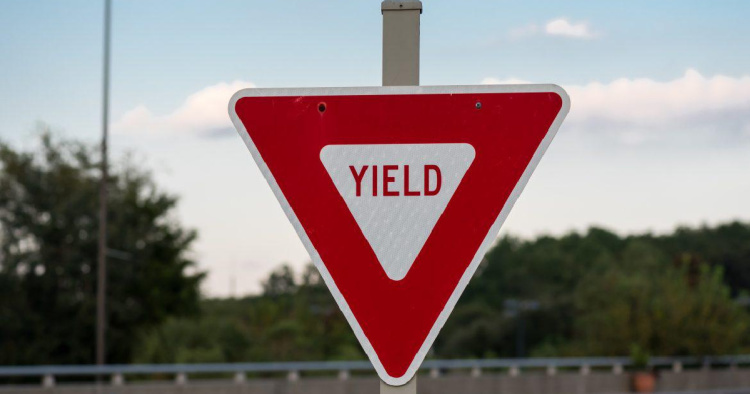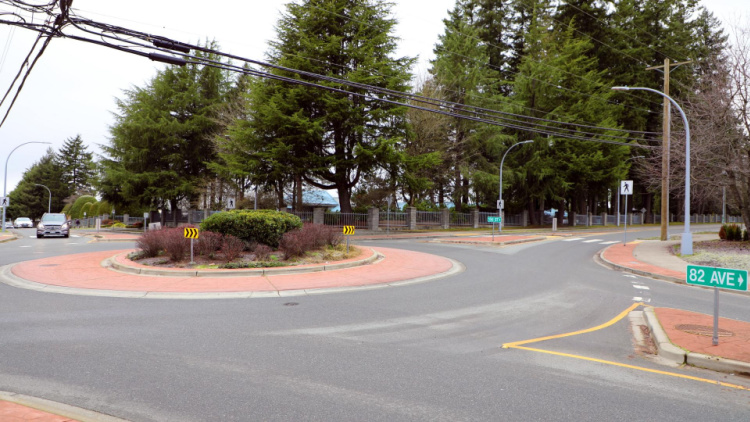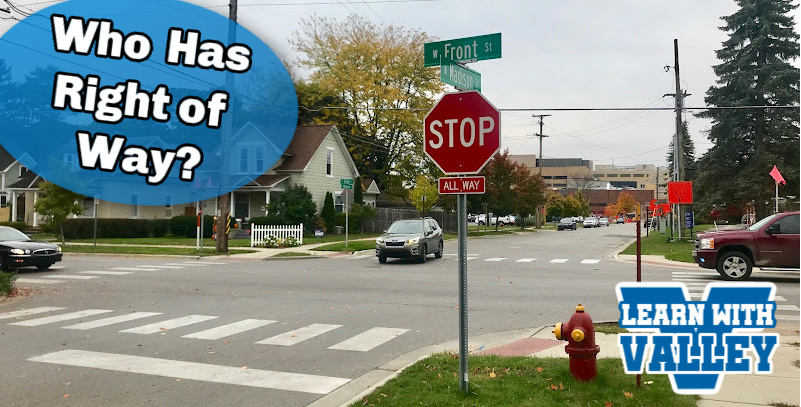Has the concept of ‘right-of-way’ always made you a bit baffled? You’ll be relieved to find out that you’re not the only one! Join us in this article as we dive in and simplify this head scratcher of a road rule.
What is Yielding?
The law doesn’t try to dictate when you have the right-of-way, but rather, when you should yield the right-of-way to others. It’s designed to keep two vehicles from being in the same space, and thereby, avoiding collisions. This is often where people get hung up - in believing they have the right-of-way because someone else is clearly in the wrong. A good example of this would be proceeding to drive through a four-way-stop intersection when it is your turn even though someone else has decided to proceed first. In the event that you make no effort to yield to this vehicle, you can actually find yourself being held liable for any collision that occurs, despite technically having the right-of-way.

In some places along roadways, a yield sign tells us to yield the right-of-way to others. This means you must always defer to all other traffic when determining the right-of-way, whether that’s cyclists, pedestrians, or oncoming vehicles. If the sign is facing you, your vehicle should not be moving until the coast is clear and it is safe to do so. Other scenarios where you must always yield the right-of-way to others, even if there is no sign expressly telling you to yield, are when pedestrians are crossing, when there are vehicles in an uncontrolled intersection, and when you are making a left-hand turn.
Who Has Right-of-Way in Roundabouts & Traffic Circles?
The difference between a traffic circle and a roundabout is that a traffic circle are single lane circles, often smaller and intended for slower speeds than roundabouts. Traffic circles will more likely be found in residential areas while roundabouts are larger, have multiple lanes, and can be found in high volume intersections where vehicles are often driving at faster speeds. In both cases, you are expected to yield the right-of-way to vehicles that are already in the traffic circle or roundabout. However, once you become one of those vehicles in the traffic circle, you then have the right-of-way to exit. Single lane roundabouts are obviously much easier to navigate in this case, but multiple lanes aren’t so bad when you understand the basics!

Be sure to enter roundabouts in the lane that corresponds with the exit you want to take. Once you’re in the roundabout or traffic circle, you should not be changing lanes until you are exiting. You are expected to yield the right-of-way to vehicles on your left and this is especially important when you’re taking one of the further exits.
Who Has Right-of-Way at Stop Signs?
At a four-way stop, the first vehicle to stop should always be the first to proceed. Then the second, then the third, and so forth. In the event that two or more drivers stop at the same time, they should all yield the right-of-way to the vehicle on their right-hand side. However, as you’ll note from our earlier example, safety always comes first so don’t be stubborn in demanding that you have the right-of-way (even if you do!), and allow another vehicle to continue if they have already started moving through the intersection. If two vehicles arrive at the same time and are facing each other, the one making a left turn must yield to the one going straight through.
The same rules apply for three-way stops and T-intersections. Since not everyone agrees or knows right-of-way, some drivers may be more aggressive in their approaches and assume they have the right-of-way even when they don’t. It’s a good idea to take extra precautions at these intersections and practice defensive driving even if you have the right-of-way.
In two-way-stops you are expected to yield to any oncoming traffic that’s crossing in front of you, as well as to the vehicle across from you when you are trying to make a left-hand turn. In this case, the right-of-way goes to the person who is driving straight through the intersection.
Who Has Right-of-Way at Traffic Lights?
There are 3 things to keep in mind when navigating the right-of-way at traffic lights. First, drivers proceeding straight through a green light always have the right-of-way. Second, drivers turning right on a green light must yield the right-of-way to pedestrians or cyclists. Finally, drivers turning left on a green light must yield the right-of-way to both oncoming traffic (including cyclists) and pedestrians. Things get a little more complicated when turning arrows are involved at a set of lights. These are specifically designed to take the guesswork out of it and notify you when you have the right-of-way. If it’s illuminated or flashing and the intersection is clear - you’re good to go! Unless explicitly prohibited by a sign, drivers may turn right at a red light after coming to a full stop and checking that the intersection is clear of both pedestrians and oncoming traffic!
Who Has Right-of-Way in Parking Lots and Alleys?
When exiting alleys, driveways, service roads, and parking lots, you are expected to stop as if there was a stop sign present at the point where the street meets your vehicle. In these cases, the sidewalks serve as makeshift stop signs! This means that once your tires hit a sidewalk, you are to stop, yield the right-of-way to oncoming traffic (including cyclists) and pedestrians, and only proceed once the road has cleared enough so you can safely enter the traffic flow. When it comes to large parking lots in areas like malls and shopping centres, remember that all intersections without signs at the crossing points are considered uncontrolled intersections and are to be treated as such. Yielding the right-of-way to oncoming traffic, pedestrians, and the vehicle on your right is the way to go whether you are entering or leaving the lot.
–
There are two important things to remember about right-of-way. One is that right-of-way is given, not taken. The other thing is that any maneuver should be done with safety as the first concern. This means that, even when you want or think that you have right-of-way, if it puts you or another road user in an unsafe position, you should rethink your actions.

